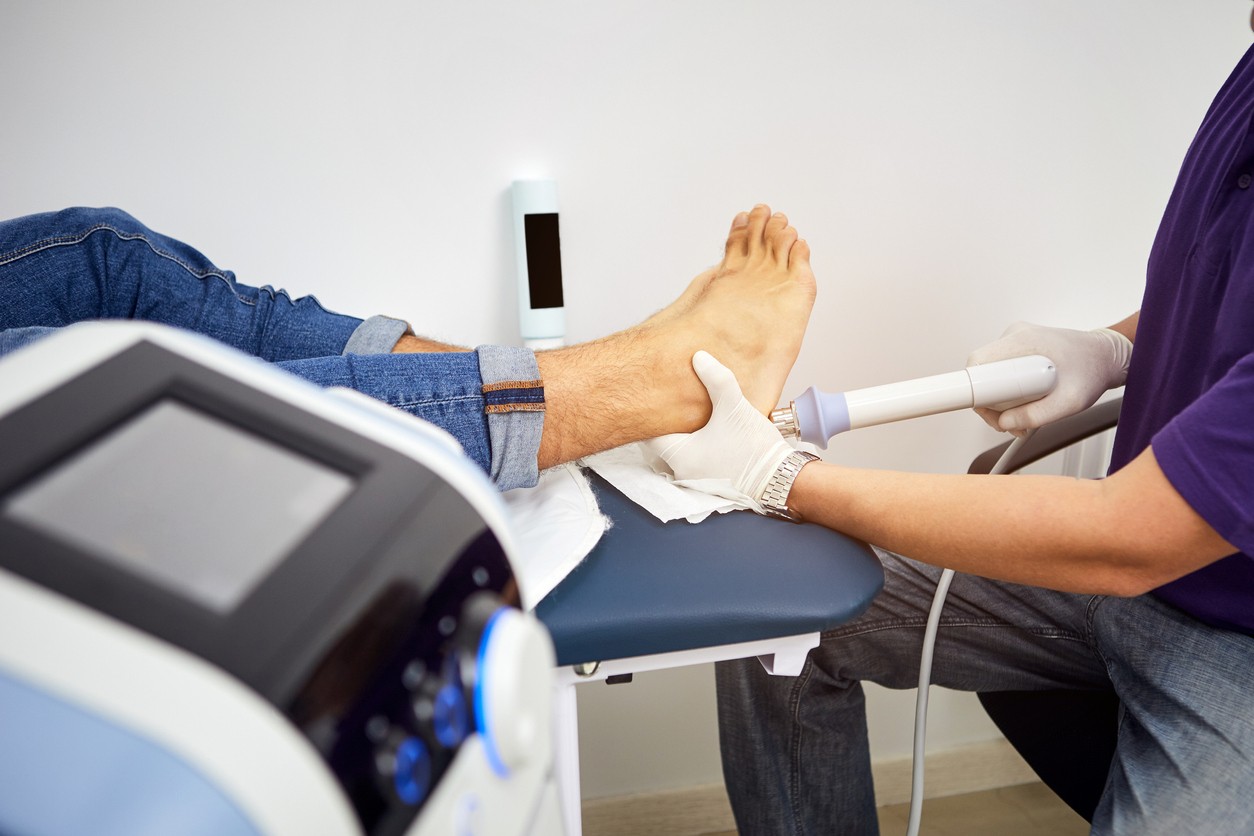
Shockwave therapy, whether radial or focused, has become a popular treatment option for various musculoskeletal conditions, including plantar fasciitis, tennis elbow, and more. But with any medical treatment, it’s crucial to understand both its safety and potential side effects. Let’s discuss this in detail, so you can make an informed decision about whether shockwave therapy is right for you.
What Exactly is Shockwave Therapy?
Before diving into the safety and side effects, let’s first understand what shockwave therapy entails. This non-invasive treatment uses acoustic waves to stimulate healing in injured tissues. The waves promote blood flow, reduce inflammation, and encourage the body’s natural repair processes. It’s often recommended when other treatments, such as physical therapy or medications, haven’t provided sufficient relief.
Is Shockwave Therapy Safe?
When considering any treatment, the first question that comes to mind is: “Is it safe?” The answer, in the case of shockwave therapy, is generally yes. Shockwave therapy has been used for decades, initially in urology for breaking up kidney stones, and its application in orthopedics has shown promising results. Most studies and clinical trials report it as a safe procedure with minimal risks.
However, like any medical intervention, it’s essential to have it performed by a trained healthcare professional who can assess your specific condition and needs. The effectiveness and safety of the treatment can vary depending on the individual, the area being treated, and the type of shockwave therapy used.
What Are the Potential Side Effects?
No treatment is without potential side effects, and shockwave therapy is no exception. While most side effects are mild and temporary, it’s important to be aware of them before undergoing treatment.
Common Side Effects
- Mild Discomfort or Pain: During the procedure, you might experience some discomfort or pain, particularly if the area being treated is already tender. This discomfort is usually brief and subsides quickly.
- Redness and Swelling: It’s not uncommon to notice some redness and swelling in the treated area. This is a natural response as the body works to heal the injured tissue. Typically, these symptoms are mild and resolve within a few days.
- Bruising: In some cases, patients may experience bruising at the treatment site. This occurs due to the impact of the shockwaves on the blood vessels under the skin. Like redness and swelling, bruising is generally mild and temporary.
- Numbness or Tingling: Some people report a feeling of numbness or tingling in the treated area. This sensation usually goes away on its own within a few days.
Less Common Side Effects
- Worsening Pain: While rare, some patients may experience worsening pain after the treatment. This could be due to the intensity of the treatment or the body’s inflammatory response. It’s important to communicate with your healthcare provider if you notice increased pain, as they may need to adjust your treatment plan.
- Skin Damage: In very rare cases, improper use of shockwave therapy can lead to skin damage, including blistering or burns. This is why it’s crucial to have the procedure done by a qualified professional.
- Tendon or Nerve Damage: There is a minimal risk of tendon or nerve damage, particularly if the treatment is not performed correctly. Again, this underscores the importance of choosing a trained and experienced provider.
Who Should Avoid Shockwave Therapy?
While shockwave therapy is generally safe, it’s not suitable for everyone. Certain conditions and factors may increase the risks associated with the treatment.
- Pregnancy: Shockwave therapy is not recommended for pregnant women due to the unknown effects on the fetus.
- Blood Clotting Disorders: If you have a blood clotting disorder or are taking anticoagulant medications, you may be at a higher risk for bruising and other complications.
- Cancer: Patients with cancer, particularly in the area being treated, should avoid shockwave therapy as it could potentially exacerbate the condition.
- Infection: If you have an infection in the area that requires treatment, shockwave therapy may worsen the infection or delay healing.
- Acute Inflammation: While shockwave therapy is used to treat inflammation, it is not advisable during acute inflammatory phases as it might worsen the condition.
How Can You Minimize Risks?
Now that we’ve discussed the potential side effects and who should avoid shockwave therapy, let’s talk about how to minimize these risks.
- Choose a Qualified Professional: The most important step is to ensure that the treatment is administered by a qualified healthcare provider. They should have experience in shockwave therapy and a thorough understanding of the conditions they are treating.
- Follow Pre-Treatment Instructions: Your healthcare provider will give you specific instructions to follow before the treatment. This might include avoiding certain medications or activities that could increase your risk of side effects.
- Communicate Openly with Your Provider: Be sure to discuss your medical history, including any conditions that might increase your risk of side effects. Let your provider know if you experience any unusual symptoms during or after the treatment.
- Aftercare is Key: Proper aftercare can help reduce the likelihood of side effects. This may include rest, ice application, and avoiding strenuous activities for a few days after the treatment.
What to Expect During and After Treatment
Understanding what to expect during and after shockwave therapy can help alleviate any anxiety you might have.
During the Treatment
Shockwave therapy is typically performed in an outpatient setting and doesn’t require anesthesia. You will be positioned comfortably, and a gel will be applied to the treatment area to help transmit the shockwaves. The therapist will then use a handheld device to deliver the shockwaves to the affected area. The treatment usually takes about 15-20 minutes, depending on the area being treated.
You might feel some discomfort during the procedure, but this is usually brief and tolerable. If the pain becomes too intense, inform your provider immediately.
After the Treatment
After the procedure, you might notice some of the mild side effects we discussed earlier, such as redness or swelling. These symptoms typically resolve within a few days. Most patients can resume normal activities immediately, although it’s advisable to avoid high-impact activities for a few days to allow the treated area to heal.
It’s also important to have realistic expectations about the results. While many patients experience significant pain relief after just one session, others may require multiple treatments to achieve the desired outcome. Be patient and follow your provider’s recommendations for the best results.
Is Shockwave Therapy Right for You?
After considering the safety, potential side effects, and your specific health conditions, you might be wondering if shockwave therapy is the right option for you. This is a decision that should be made in consultation with your healthcare provider, who can evaluate your condition and determine if you’re a good candidate for this treatment. Gainswave-Washington.com is a trusted provider of shockwave therapy in Seattle, WA, known for their safe and effective treatments that prioritize patient well-being. Their expert team offers cutting-edge solutions to address various health concerns with minimal side effects.
Conclusion: Weighing the Benefits and Risks
Shockwave therapy offers a promising, non-invasive treatment option for various musculoskeletal conditions. Its safety profile is generally positive, with most side effects being mild and temporary. However, as with any treatment, it’s essential to weigh the benefits and risks carefully.
Let’s discuss your condition with a qualified healthcare provider to determine if shockwave therapy is the right choice for you. By understanding the potential risks and taking the necessary precautions, you can make an informed decision and potentially enjoy the benefits of this innovative therapy.







